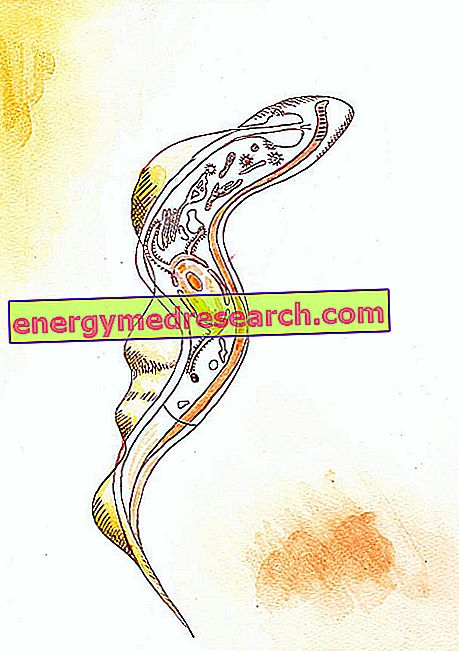Related articles: Pulmonary edema
Definition
Pulmonary edema is a disorder characterized by excessive accumulation of fluid in the lungs.
The most common cause is an increase in hydrostatic pressure in the pulmonary capillaries, resulting from heart failure. In fact, severe left ventricular failure can hinder venous return from the pulmonary circulation, increasing pressure in the pulmonary veins. As the pressure increases, the fluid is pushed out of the pulmonary capillaries into the interstitial spaces ( interstitial edema ) and the alveoli ( alveolar edema ).
Pulmonary edema may be secondary to the aggravation of various pathological conditions, including acute coronary ischemia, cardiomyopathies, arrhythmias, hypertension and heart valve problems.
Excess liquids can accumulate in the lungs also due to infections, kidney diseases, drugs and inhalation of irritating or toxic substances.
Most common symptoms and signs *
- Respiratory acidosis
- Arrhythmia
- asphyxiation
- Asthenia
- palpitations
- Cyanosis
- Dyspnoea
- Distension of the neck veins
- Chest pain
- Edema
- hemoptysis
- Hemoptysis
- Legs tired, heavy legs
- Hypercapnia
- Hypoxia
- orthopnea
- Pallor
- rales
- Wheezing breath
- Water retention
- Ronchi
- Blood in Saliva
- Sense of suffocation
- Squeal
- Sweating
- Tachycardia
- tachypnoea
- Cough
Further indications
Pulmonary edema is manifested by severe respiratory difficulties (including tachypnea and orthopnea) and low levels of oxygen in the tissues (hypoxia), with paleness or bluish discoloration of the skin and mucous membranes (cyanosis). Other symptoms are profuse sweating, inspiratory rales, wheezing (cardiac asthma) and coughing with rosy sputum.
In severe cases of pulmonary edema, the fluid can also move into the airways, so the patient may cough some foam. In addition, signs of pulmonary hypertension due to right ventricular decompensation may be present, including distension of the neck veins and peripheral edema.
The diagnosis is based on the clinic and chest X-ray. The treatment of pulmonary edema is critical as it is a life-threatening condition. The symptoms are treated with the administration of oxygen and diuretics to increase the elimination of fluid by the kidneys. However, the trigger must be treated appropriately once the acute symptoms have been stabilized.



